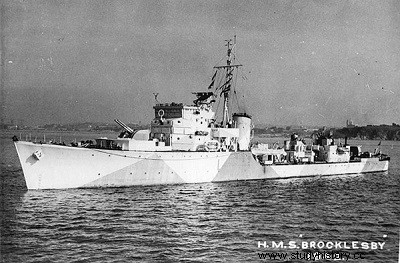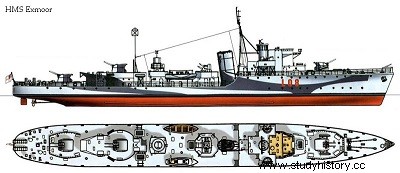
Aware as early as 1938 of the insufficient number of escorts, the Ministry of the British Navy developed what received the name of "fast escort" in order to provide convoys with both anti-aircraft and anti-submarine cover without mobilizing the precious destroyers which proved ill-suited to this type of role . Showing a certain lack of foresight, he emphasized speed and not autonomy, considered the prerogative of true escorts (a term which was then to be applied to the few Black Swans rather than to the Flowers). or the Bangors). To make them better gunnery platforms, active stabilizers were fitted to early Hunt-class ships, but their power requirements and poor control systems made them so unpopular that later ships had to use them instead. additional fuel bays which greatly improved their endurance.
Although they were categorized as destroyers before entering service, the Hunts were in reality the equivalent of "torpedo boats" of the German and Italian fleets, apart from the fact that most of them did not carry any torpedo tubes. The original specification, which called for the installation of six 101.6 mm guns with vertical firing and two or four torpedo tubes, was indeed too ambitious for the planned displacement, and this defect, combined with a serious error in the calculations, caused that the first unit of the class, the HMS Atherstone, turned out to have stability problems. On the boats then under construction, the tubes were removed and the X carriage was exchanged for a quadruple “2” piece, measures accompanied by many other minor modifications aimed at reducing their weight; these buildings constituted the Hunt Type I class, nineteen units strong. The thirty-six specimens of the Hunt Type II series had a wider hull of 0.76 m, which, while decreasing their speed, made it possible to mount the third carriage specified by the specifications. A last variant of the same dimensions, the Hunt Type III class, was produced, numbering twenty-eight units.

Features
Hunt Class III
Displacement :1,015 t standard, 1,090 t fully loaded.
Dimensions:
length , 85.70 m;
width , 9.60 m;
draft , 2.36 m.
Engine apparatus :2 geared steam turbines developing 19,000 hp and driving 2 shafts.
Speed :25 knots.
Autonomy :4,635 km at 20 knots.
Armament :2 mixed twin 101.6 mm guns, 1 "Pompom" of "2" quadruple (and, on some units, 1 single) and 1 twin, up to 4 single 20 mm AA guns, 2 torpedo tubes of 533 mm and ASM grenades.
Crew :170 officers and sailors.
